Learn how to deadhead roses and have brilliant blooms in your garden all summer — including how to properly examine them, the right time to do it, and how deadheading roses differs from deadheading other types of flowers.
Learning how to deadhead roses will encourage your thorny beauties to keep on giving you bloom after bloom throughout the sunny season — and even longer. Deadheading isn’t difficult, or confined to just roses. Many flowering plants require deadheading to encourage flowers to flourish. Check out our articles on how to deadhead geraniums and how to deadhead petunias for a spray of summer color in your garden.
Deadheading essentially means and involves the removal of wilted or dead flowers from plants to encourage and make room for more. Doing it correctly is important to minimize injury to the rose plant— and if you want an array of strong blossoms quickly.
To deadhead roses, you will need:
- Gardening gloves (thick enough to avoid a thorn entering and long enough to cover any parts of the hand/arm that will be exposed to the rose bush)
- Clean, sharp hand shears
- A bucket/basket to collect dead heads
Types of Roses

The American Rose Society divides all roses into three main groups: Species (i.e., wild roses); Old Garden Roses (classes in existence before 1867); and Modern Roses (classes not in existence before 1867). These three groups were further divided into 37 classes according to their origin, growth characteristics and classification.
Species Roses — Often referred to as “wild roses.” Species roses typically have a single bloom with a five-petal flower. These roses are almost always pink.
Old Garden Roses — Often referred to as “antique” roses and “historic” roses. Old Garden Roses have evolved to be extra hardy and disease-resistant. They are highly fragrant and exhibit double blooms that flower once per season.
Modern Garden Roses — The most commonly grown rose. Modern roses have extra-large blooms that make beautiful cut flowers. You will have continuous blooms if you deadhead these roses regularly. The downside with these flowers is that they are not as fragrant, hardy or disease-resistant as their predecessors.
The process of deadheading roses is a little more complicated than for many other flower varieties. Essentially, it can be summarized in three steps.
1. How to Examine Your Roses
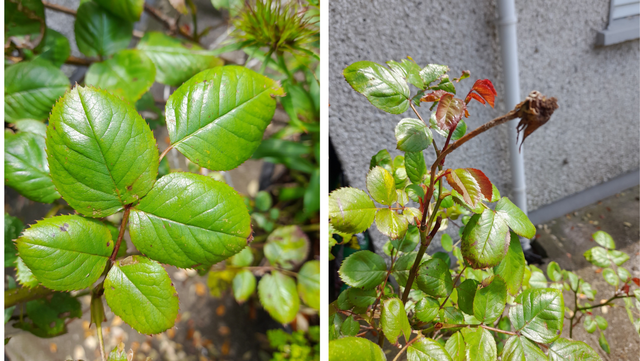


Start by identifying the blooms that are dying and/or wilting. Look at where the stem meets the base of the deadhead(s). Then, examine the stem below — looking at where it begins to get thicker as you move further down away from the flower head. You want to cut at the thicker end.
Count the sets of leaves that are growing from the stem below the wilting bloom. Some leaves will grow in pairs, others will grow in threes, others in clusters of five. Note where the first group of five is growing below the deadhead.
You can also use this opportunity to examine your plant for signs of infection or infestation by aphids or fungi. For more information, check out our guide to diseases and pests in roses.
2. How to Deadhead Roses
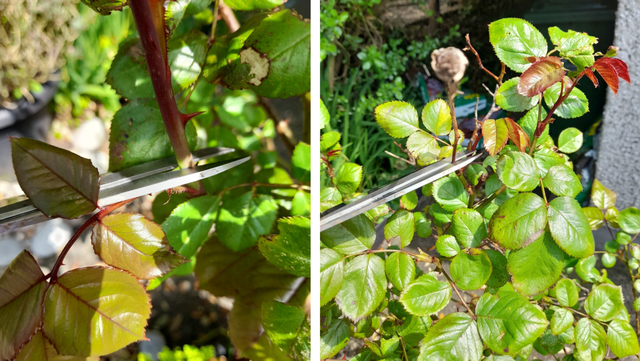


There is no unanimously agreed “exact” way to deadhead roses. Each variety grows differently — so deadheading will vary a little. Some roses grow as single stems, while others grow in clusters. Therefore, what type of flower formation you are deadheading will dictate what and where you cut.
- If you are deadheading a single flower-head: Identify the first group of five leaves on the stem below the deadhead. Cut the deadhead just above this formation of five leaves — leaving the group of five attached to the stem. This is the traditional method used to deadhead roses to encourage faster and flourishing new blooms. You will not harm your plant if you cut at another point along the stem. Some gardeners prefer to cut at a 45-degree angle to prevent die off of the stem. Again, there is no exact science.
- If you are deadheading a cluster formation: If one or two of the flowers are wilting, remove individual dead heads by cutting the bloom just below the flower head. If most or all of the cluster are dying, cut the main stem just above the first set of five leaves as shown.
3. How to Gather and Recycle Your Spent Blooms
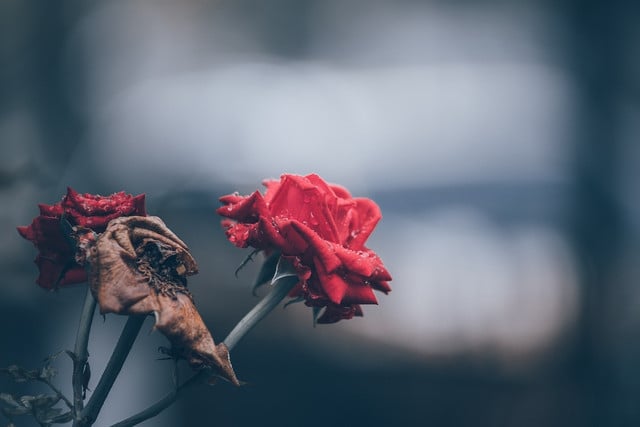


Use your basket or bucket to gather the deadheads. Instead of adding to garbage, landfill, and subsequent pollution — why not learn how to dry roses or make rosewater? You could also use your deadheads to make wet or dry potpourri or learn how to preserve wilted roses and enjoy your cuttings for a little longer.
Even if you’re not feeling very creative, your deadheads can be added to hot and cold composting piles. You don’t need a huge pile or composting bin to compost successfully. In fact, you can even compost in an apartment. Knowing what you can compost, what you can’t, and why is an excellent step towards sustainability and garbage reduction.
Gathering your deadheads is a very important step. Many wilting roses — particularly when wet and soggy — attract aphids, fungi and other invaders. If you leave your infested dead blooms on the ground, near your rose bush or other plants — these diseases and pests can quickly spread. If you are having problems with pests, avoid harmful chemicals and check out our article: Natural Pesticides: A Comprehensive Guide For Your Garden.
How Does Deadheading Roses Work?



Your rose bushes — like all living things — are programmed to reproduce. Most plants do so by flowering. This attracts pollinators for pollination — which is necessary for fertilization — to occur. So, if you deadhead your roses — they can’t reproduce and will keep flowering and flowering in a bid to so. If you don’t deadhead your flowers and the plant is fertilized — they will form rose hips and flowering will slow or cease completely (because the plant diverts its energy into the hips).
Just getting into gardening? Learn more about the basics in our guides on how to start a garden step by step, or — a little more advanced — native gardening or urban gardening.
When Should I Start and Stop Deadheading Roses?
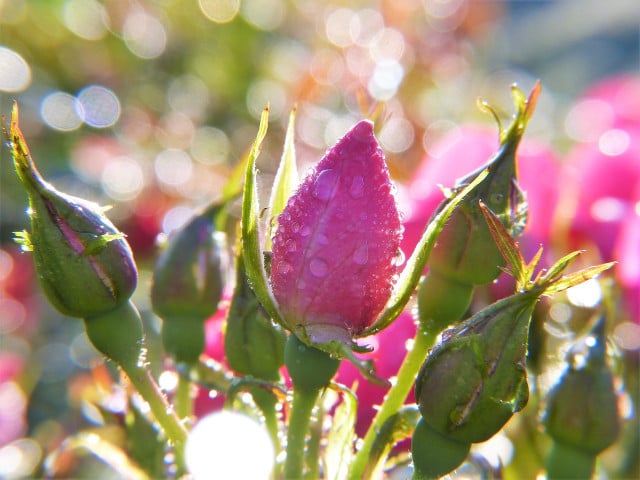


You can start to deadhead your roses when the first blooms of the year begin to wilt to encourage new flower buds.
Stop deadheading before the last blooms of the season if you want some hips for winter. Why not give your roses a boost with our homemade fertilizer throughout the season too?
Are Roses Environmentally Friendly?
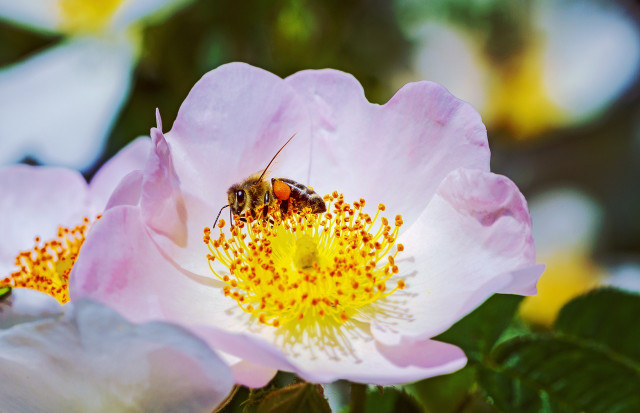


Most rose species are native to Asia, but many regions of the globe have their own native species. Over 20 rose species are native to various parts of North America. The plants have, however, been hybridized and cultivated all over the world, with a huge array of varieties now available in the US. Buying locally grown, organic plants will automatically reduce their carbon footprint.
Traditionally, some breeds of roses required large volumes of water, fertilizer, and even pesticides to thrive. Many modern species are now more environmentally and wildlife friendly. When grown organically, roses are one of our favorite edible flowers and appear to have a reasonable array of health and environmental benefits, such as:
- Petals and fruits are a source of vitamins, minerals and other biochemically active compounds that can be extracted or consumed.
- Flowers are a source of tannins, antiseptic, essential oils, and wax that are commonly extracted for a variety of uses.
- They can contribute to biodiversity of both flora and fauna.
- Pollinator attraction (nectar content and availability varies substantially between varieties)
- Habitat creation
- Associated with particularly positive effects within urban settings and urban gardening — such as improving air quality, helping to regulate climate, altering aesthetic surroundings, increasing enjoyment of everyday life, and improving health
Overall, the rose appears to contribute to an array of ecological functions — particularly in urban settings, where the urban heat island effect is demanding more plants. On the downside, though, our modern tendency to breed new, attractive varieties has led to changes in plant make-up compared to wild varieties with simple flowers — which can interfere with pollination or significantly decrease it. Wild varieties with fewer petals are generally friendlier flowers for bees.
Check out our articles for some more simple ways to help honeybees — like building a DIY bee waterer — and other ways to prevent bee extinction.
Stay Hip and Don’t Deadhead
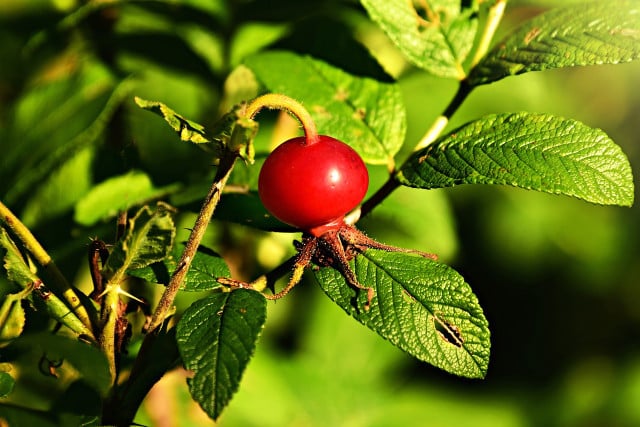


If you stop deadheading roses early or don’t at all, your deadheads will become hips — which are often ornamental and attractive during colorless winter months. They are also a welcome treat for birds, wildlife and humans when other sources of seasonal nutrition are low.
Rose hips actually have a variety of uses and benefits. Learn how to dry rose hips for an endless supply when the season is over. You could use them in meals, drinks and remedies to enjoy the benefits of rose hip tea, or give yourself a winter boost with our rose hip syrup and vitamin C infusion.
If you haven’t grown the rose hips yourself and are foraging instead — make sure that the rose bushes have not been sprayed or treated with harmful pesticides or fertilizers.
Read more:
- 7 Beautiful Flowers to Plant in March & Other Spring Gardening Ideas
- 8 Spring Bucket List Ideas For Garden and Plant Lovers
- The Best Time to Plant Grass Seed for Optimal Growth
Do you like this post?








